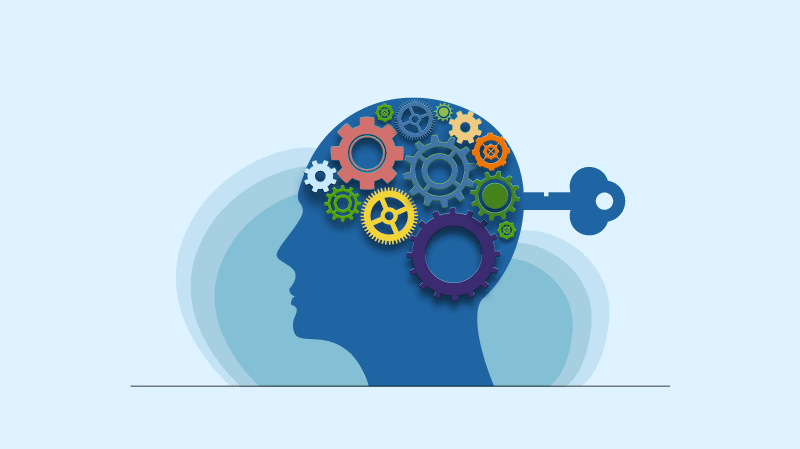Why Cognitive Behavioral Therapy Is Effective for Pain Control

This article examines the effectiveness of cognitive behavioral therapy (CBT) in pain control.
CBT is a well-established therapeutic approach that focuses on the interplay between thoughts, emotions, and behaviors. It is widely used in various clinical settings, including pain management.
By identifying and modifying maladaptive cognitive processes, individuals can learn to effectively cope with pain and improve their overall quality of life.
This article will explore the scientific basis for CBT’s efficacy in pain control, as well as practical techniques and long-term benefits associated with its implementation.
Key Takeaways
- CBT focuses on the interplay between thoughts, emotions, and behaviors in pain control.
- CBT helps individuals challenge negative thoughts and beliefs about pain, reducing pain-related distress.
- Thoughts and beliefs impact individuals’ perception and interpretation of pain, and cognitive restructuring in CBT modifies maladaptive thoughts and beliefs.
- CBT leads to significant reductions in pain intensity, disability, and psychological distress, and its benefits persist over time.
The Science Behind Cognitive Behavioral Therapy for Pain Control
The effectiveness of cognitive behavioral therapy (CBT) for pain control can be attributed to its underlying mechanisms, which are supported by scientific evidence.
CBT recognizes the role of emotions in pain perception and management. Emotions such as fear, anxiety, and depression can exacerbate pain and hinder recovery.
Through cognitive restructuring, CBT helps individuals identify and challenge negative thoughts and beliefs about pain, promoting more adaptive and positive cognitive responses. This process involves examining the accuracy and validity of these thoughts and replacing them with more realistic and helpful ones.
By addressing maladaptive thoughts and emotions, CBT aims to reduce pain-related distress and improve coping strategies.
Scientific research has consistently shown that CBT can effectively reduce pain intensity, improve functioning, and enhance overall well-being in individuals suffering from chronic pain conditions.
Understanding the Role of Thoughts and Beliefs in Pain Management
Understanding the role of thoughts and beliefs in managing pain involves examining the impact of cognitive processes on individuals’ perception and interpretation of their pain experiences. The role of mindset, specifically, plays a crucial part in pain management.
A person’s mindset refers to their overall outlook, attitudes, and beliefs about pain. Research has shown that individuals who adopt a positive mindset and believe in their ability to control and cope with pain tend to experience better pain outcomes compared to those with a negative mindset.
Cognitive restructuring, a key component of cognitive-behavioral therapy (CBT), is a technique that aims to modify maladaptive thoughts and beliefs about pain. By challenging and replacing negative or unhelpful thoughts with more adaptive and realistic ones, cognitive restructuring can help individuals develop a healthier mindset and improve their pain management strategies.
Practical Techniques for Applying Cognitive Behavioral Therapy to Pain Control
One practical technique for applying cognitive restructuring to pain management involves challenging and replacing maladaptive thoughts and beliefs with more adaptive and realistic ones. Cognitive restructuring techniques for pain control aim to identify and modify negative thought patterns that contribute to the experience of pain. This can be achieved through various strategies, such as cognitive reframing, cognitive distancing, and cognitive defusion.
These techniques help individuals to reevaluate their thoughts and beliefs about pain, and develop more positive and helpful perspectives. In addition to cognitive restructuring, implementing relaxation techniques in cognitive behavioral therapy for pain management can also be effective. Relaxation techniques, such as deep breathing, progressive muscle relaxation, and guided imagery, help individuals to reduce stress and tension, which in turn can alleviate pain symptoms.
Addressing Emotional Factors in Pain Management Through Cognitive Behavioral Therapy
Addressing emotional factors in pain management can be achieved through the application of cognitive behavioral techniques that aim to identify and modify negative thought patterns related to pain. This approach recognizes the significant impact of emotions on pain perception and aims to enhance emotional regulation and cognitive restructuring to effectively manage pain. By targeting emotional factors, individuals can develop healthier coping strategies, reduce the intensity of pain, and improve overall well-being.
- Cognitive restructuring: This technique helps individuals identify and challenge negative thoughts and beliefs about pain, replacing them with more realistic and adaptive thoughts.
- Relaxation techniques: These techniques, such as deep breathing and progressive muscle relaxation, promote emotional regulation and reduce pain-related stress.
- Mindfulness-based interventions: By cultivating non-judgmental awareness of the present moment, individuals can develop a more accepting and compassionate attitude towards pain, decreasing emotional distress.
- Problem-solving skills training: This technique helps individuals identify and address the underlying causes of pain-related emotional distress, promoting effective problem-solving and reducing negative emotions.
Long-Term Benefits of Cognitive Behavioral Therapy in Pain Control
The long-term benefits of utilizing cognitive behavioral techniques in pain management have been demonstrated through research studies.
Cognitive behavioral therapy (CBT) is a widely recognized and effective approach that aims to modify maladaptive thoughts and behaviors associated with pain. By addressing the cognitive and behavioral aspects of pain, CBT helps individuals develop coping strategies and improve their quality of life.
Research has shown that CBT can lead to significant reductions in pain intensity, disability, and psychological distress. Moreover, the benefits of CBT have been shown to persist over time, with studies indicating sustained improvements in pain outcomes even after treatment completion.
These findings highlight the effectiveness of CBT as a long-term approach for managing pain and suggest its potential as a valuable addition to pain management interventions.
Frequently Asked Questions
Are There Any Potential Side Effects or Risks Associated With Cognitive Behavioral Therapy for Pain Control?
Side effects and risks associated with cognitive behavioral therapy (CBT) for pain control are minimal. CBT has been found to be an effective standalone treatment and can be used in conjunction with other therapies. It is suitable for specific populations and can be offered as a time-limited treatment or long-term commitment.
How Does Cognitive Behavioral Therapy Differ From Other Forms of Pain Management Techniques?
Cognitive behavioral therapy (CBT) differs from other forms of pain management techniques, such as medication or physical therapy, by focusing on modifying thoughts, beliefs, and behaviors to alleviate pain.
Can Cognitive Behavioral Therapy Be Used as a Standalone Treatment for Chronic Pain, or Is It Typically Used in Conjunction With Other Therapies?
Cognitive behavioral therapy (CBT) can be used as a standalone treatment for chronic pain or in combination with other therapies. Its efficacy in pain control is supported by research, suggesting its potential to improve patient outcomes.
Are There Any Specific Populations or Individuals Who May Not Benefit From Cognitive Behavioral Therapy for Pain Control?
Specific populations or individuals who may not benefit from cognitive behavioral therapy (CBT) for pain control include chronic pain patients and individuals with severe mental health disorders.
Is Cognitive Behavioral Therapy a Time-Limited Treatment, or Is It an Ongoing Process That Requires Long-Term Commitment?
Cognitive behavioral therapy (CBT) can be both a time-limited treatment and an ongoing process that requires long-term commitment. The duration and intensity of CBT can vary depending on the individual’s needs and the nature of their pain.








